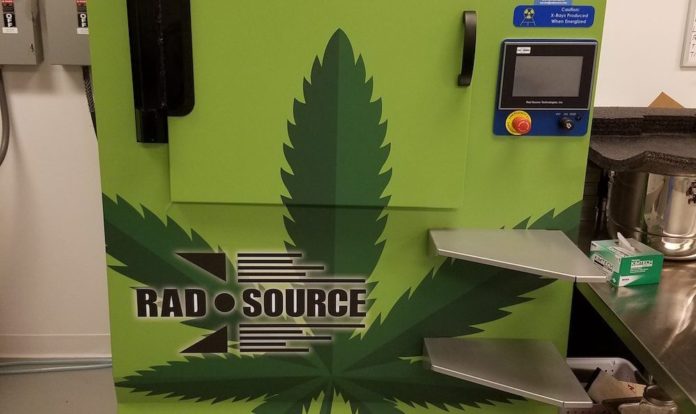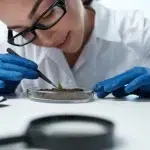Look out mold, yeast, pests, and other pathogens! The RS 420 irradiation unit has super powers over cannabis crop villains
Radiation gets an undeserved bad rap. In popular culture, the word alone prompts comic-book visions of leaky nuclear reactors, global apocalypse, and strange mutations. So, zapping cannabis crops with non-gamma X-rays may seem extremely unnatural to some. Will smoking irradiated flower turn you green like the Incredible Hulk?
“No, radiation has very little effect on the cannabis,” Rad Source product engineer Nathan Kroeger said, debunking a popular misconception. Irradiated materials do not contain radiation.
“There is no heat or pressure put on the buds during processing,” he said. “The buds are placed inside of the processing canisters; then the canisters are placed inside of the RS 420. While the canisters themselves move around our patented QuaStar© X-ray source, the cannabis buds do not move inside of the canisters.”
Rad Source developed the RS 420 modular irradiation unit exclusively for the industrial cannabis market to eliminate pests, mold, yeast, disease-causing bacteria, and other microorganisms in crops. The on-site unit can increase yields by effectively removing harmful pathogens from fully grown plants, making the product viable for sale and compliant with (current and quickly developing) regulations for human consumption.
Irradiation also helps ensure consumer safety and product quality by removing harmful contaminants. The Food and Drug Administration, U.S. Department of Agriculture, and World Health Organization have approved the proprietary technology used in the RS 420 in other applications, but the technology is new to cannabis growers.
“At this time, two and a half pounds per cycle is the maximum. We’re evaluating developing larger units,” Kroeger said. Each cycle takes up to two hours. Companies requiring larger configurations should contact Rad Source, according to the company’s website.
The RS 420 also can provide growers with data about questionable crops, which can help growers pinpoint specific problem organisms and also document issues or improvements by batch. Kroeger explained, using aerobic plate count as an example. “Aerobic plate count is the total count of microorganisms on a product and is generally used as a quality test.”
The Georgia-based company, established in 1997, specializes in developing X-ray technology for use in closed-source irradiation processes. In 1999, Rad Source’s blood irradiator was the first to be approved by the FDA. Other product development has been primarily in the medical and research industries.
“Other items that our X-ray irradiators are used for are to irradiate blood for GVHD [a process used for bone marrow treatments], cells for cancer research, and insects for insect pest control,” Kroeger said.
Irradiating insects, called “sterile insect technique,” is used against crop pests and vector insects. The technique creates sterile bugs, which are introduced to the environment in order to interrupt targeted organisms’ reproductive cycle. Even small animals like mice can be irradiated for research purposes.
In the U.S., the FDA and USDA regulate federal irradiation standards and policies for consumable goods and have allowed the technology’s use for decades. Foods that have been approved for irradiation in the U.S. include red meat, poultry, pork, produce, potatoes, wheat, herbs, and spices. Common consumables that contain measureable amounts of natural radioactivity include bananas, Brazil nuts, and tobacco, which accumulate natural radium from soil.
International standards for irradiation vary and typically include products for import and export. India recently approved four irradiation projects to build facilities that will use gamma irradiation to preserve perishable food products including onions, garlic, pomegranates, mangoes, dehydrated onion powder, and Ayurvedic raw materials.
As markets expand and marijuana begins to be treated like more traditional consumable crops, irradiation may become a processing standard. That would be great for Rad Source and future iterations of the RS 420. For growers—and their customers—who hate moldy weed, the wait for a practical, high-tech solution could be over.












